The Most Scandalous and Dangerous Diamonds in History
The $40 million Princie Diamond isn’t the only big-ticket sparkler that has provoked legal battles and family upheaval. Over the centuries, important diamonds have been known to contribute to salacious scandals and the downfall of dynasties—even death. Here, eight diamond tales worthy of a Greek Tragedy.
The Hope Diamond
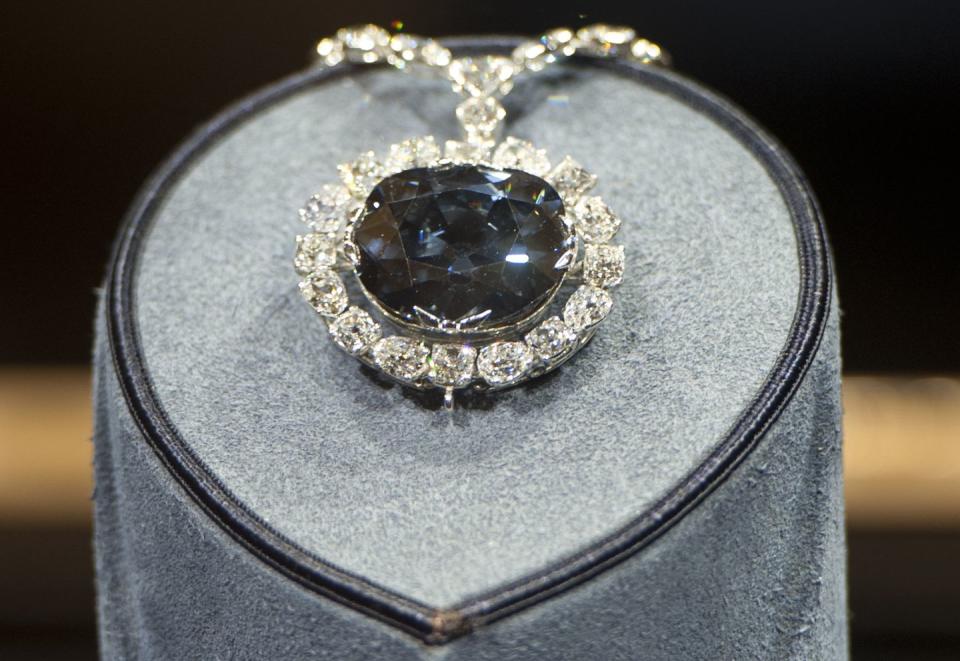
The Hope diamond is as famous for its exceptional size and color as it is for its scandalous 350-year history, which reads like a thriller. The 45.52-carat saturated blue diamond (about the size of a walnut) changed hands on numerous occasions, was stolen several times, and disappeared for decades before it was eventually found, recut, and reshaped. Throughout its history, it famously wreaked havoc on many of its unfortunate owners. Legend has it that a thief plucked the stone from the eye of a Hindu statue, a bad omen and, perhaps, the origin of its curse. Owners included Marie Antoinette and Louis XIV (we know how that story ended), and the heiress Evalyn Walsh McLean, who, after purchasing the stone, lost several members of her family, including a son, who died at age nine, and a daughter at age 25. After Walsh McLean’s death, her surviving children sold the stone to Harry Winston, who famously mailed it to the Smithsonian in Washington D.C. for $2.44 in postage. Supposedly, the mailman who delivered the stone to the museum soon after had his leg crushed in a truck accident. Today, the cursed stone is safely ensconced in the Smithsonian, where it remains the museum’s most popular attraction—and where it can’t cause any harm.
Le Collier de la Reine
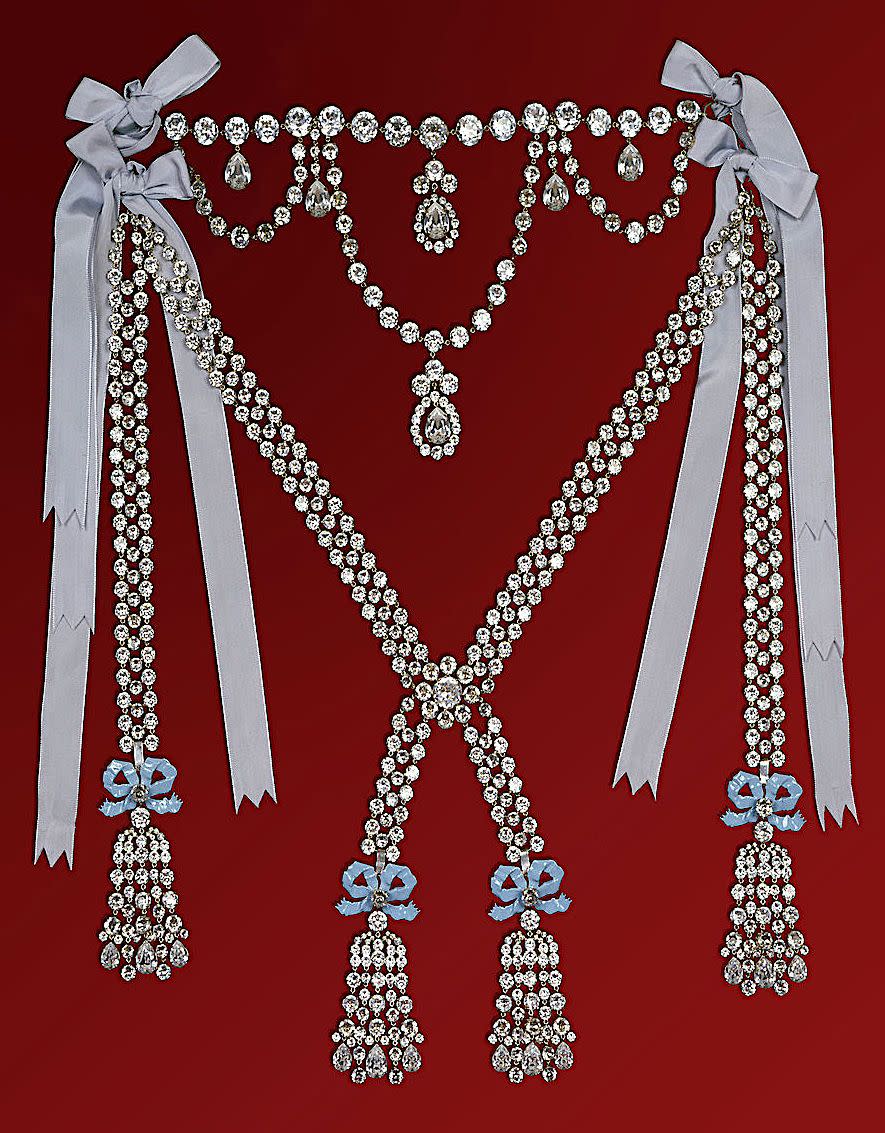
Marie Antoinette, already unpopular with the French people due to her excessive lifestyle, was an easy target. The conniving Comtesse de la Motte devised a scheme to further shame the queen by manipulating Cardinal de Rohan into buying an extravagant diamond necklace on the queen’s behalf, when actually it would be for herself. The massive necklace was the property of jeweler Boehmer and Bassenge, who had made the piece for Louis XV to give to his mistress Madame du Barry—then the former died and the latter was banished from court. The jewelers had then tried, several times, to sell the necklace to Marie Antoinette, but she had refused. La Motte pretended to be the queen in her correspondence with the cardinal, and instructed him to purchase the necklace. Eventually her plot was revealed, but not before she took apart some 28,000 diamonds from the necklace and sold them on the black market. La Motte was sent to a prostitutes' prison. Even though the queen was innocent in all of this, the scandal only added to the disdain for her lavish lifestyle and immoral social circle. Many believe the necklace incident hastened her demise.
The Blue Diamond Affair

In 1989, a Thai gardener working in the household of a Saudi Arabian prince made off with 200 pounds of jewels while his employers were away on holiday. Included in the loot, which he stashed in a vacuum cleaner bag, was a 50-carat blue diamond. He fled to Thailand with the jewels but, given the high profile nature of his crime, found it difficult to sell his wares. Instead he sold each piece individually at a hefty discount. The Saudis alerted Thai authorities, who captured the gardener and managed to retrieve the jewels he had already sold to a jeweler named Santhi Sithanakan. Police Lieutenant-General Chalor Kerdthest himself flew to Saudi Arabia with the recovered treasures to personally return them to the prince.
Things only got worse—the Saudis realized most of the returned jewelry was fake, and the pièce de résistance, the 50-carat blue diamond, was missing. They sent a delegate to Bangkok to investigate the matter—then that delegate disappeared, and the Saudi consul and two other officials of the Saudi Arabia embassy in Bangkok were shot dead. The Saudis believed Thai police had switched the real gems for fake ones—a suspicion that was basically confirmed when wives of Thai officials were seen at events wearing jewels looking very similar to the ones that belonged to the prince.
Four years later, in 1994, the aforementioned jeweler who bought the pieces from the gardener (and who would've been able to name his buyers) was kidnapped, while his wife and son were murdered. Lieutenant Kerdthes was convicted of the crimes and is still serving out his sentence.
The blue diamond was never recovered. Saudi Arabia cut diplomatic ties with Thailand—and their relationship remains strained to this day. And as for that gardener? He's now a monk.
The Taylor-Burton Diamond

At a New York auction in 1969, Cartier paid a record-breaking $1,050,000 for a flawless 68.4-carat pear-shaped diamond. At the time, it was the highest price paid for a jewel at auction. The very next day, a love-struck Richard Burton purchased the stone for his wife, Elizabeth Taylor. Before Burton took possession of the stone, Cartier famously displayed it in its Fifth Avenue windows for a week, and throngs of people came to see it. Taylor was often photographed wearing the pear diamond set in a necklace, but after the celebrity couple divorced for the second time in 1976 and Taylor married her sixth husband, politician John Warner, she decided to rid herself of the stone and all of its memories. In 1978, the diamond was sold to New York jeweler Henry Lambert, who sold it to Robert Mouawad of Mouawad Jewelers a year later. It’s still referred to as the Taylor-Burton diamond because who doesn’t love a good romance?
The Koh-I-Noor
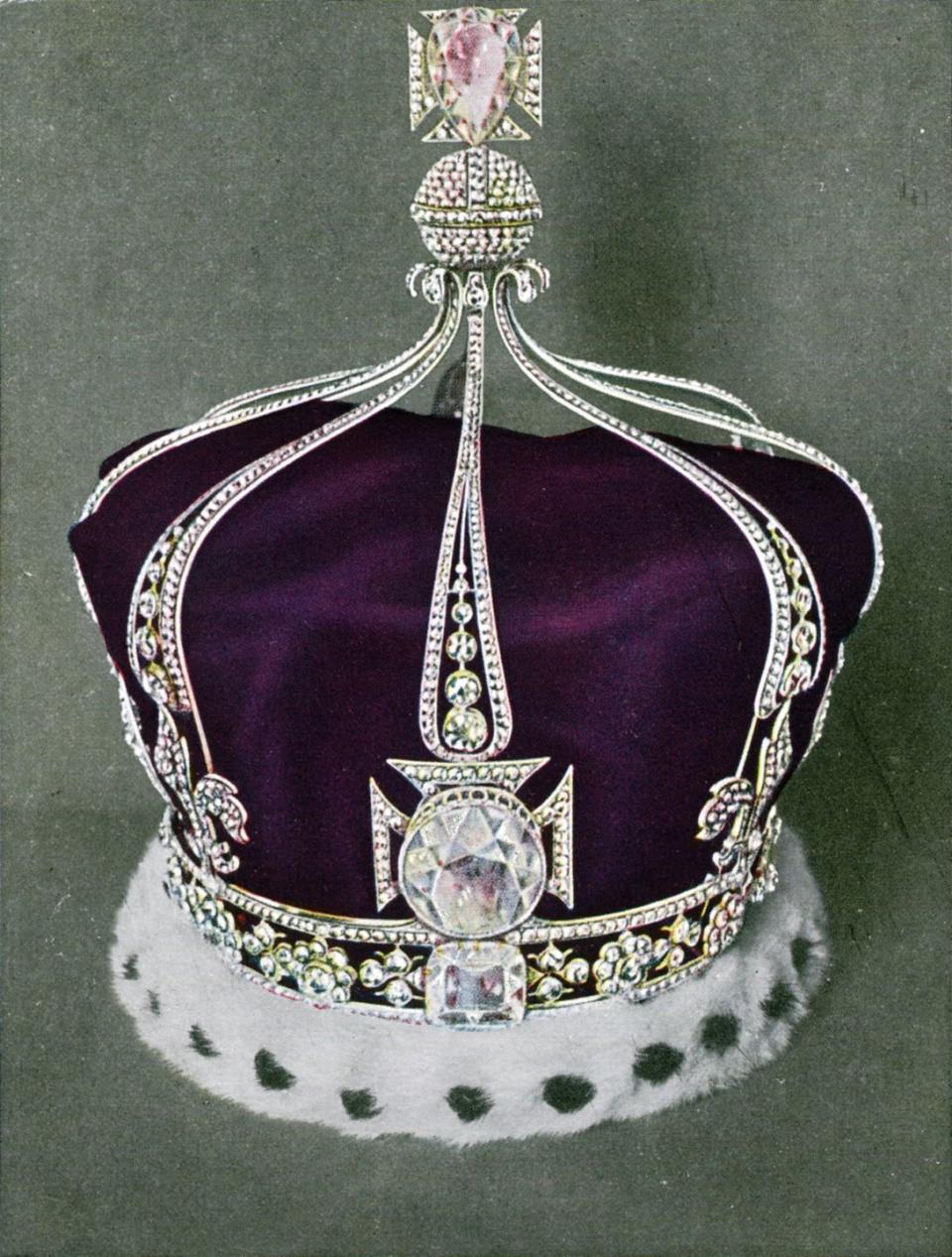
The renowned Koh-I-Noor diamond left a trail of death and despair throughout much of its 750-year history. The massive 186-carat stone, about the size of an egg, was traded, stolen, and passed between warring countries until it was finally presented to Queen Victoria. In 1911, it was set into the Imperial Crown, and for good reason. The stone is believed to carry a curse that is fatal to men, and this particular crown is reserved for the royal family’s female members. “Only God or a woman can wear it with impunity,” according to a Hindu text, circa 1306, about the cursed stone. For centuries, the stone brought tragedy and death to the numerous Mughal rulers who owned it, including Shah Jahan, who built the Taj Mahal. He had the prized diamond and placed it into his famous Peacock Throne. Sadly he wouldn't enjoy it for too long—Jahan was overthrown and imprisoned by his own son.
The Black Orlov Curse
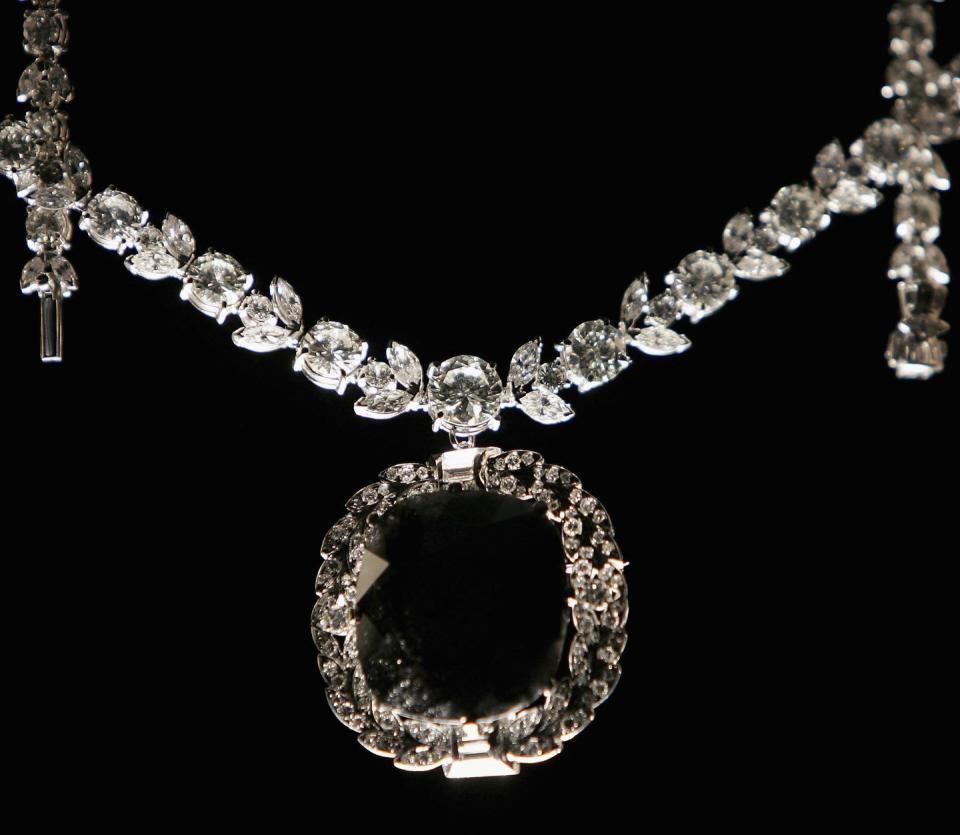
When a monk stole the enormous Black Orlov diamond from the eye of a Hindu statue of Brahma in the 19th century, locals believed the gods had cursed it. Legend has it that the monk was later murdered, and the stone disappeared until 1932, when the dealer J.W. Paris purchased the diamond. He ended up jumping to his death from a New York high rise. But he wasn’t the only one. The diamond was also owned by two Russian princesses, Leonila Galitsine-Bariatinsky and Nadia Vygin-Orlov (for whom the stone was eventually named), and both, separately and rather bizarrely, jumped to their deaths. In 1950 Charles F. Wilson purchased the stone and cut it down to its current 67.5 carat size in the hopes that it would end the curse. Apparently, it worked.
The Sancy Diamond

The 55.2-carat pale yellow pear-shaped diamond has a long list of regal owners dating back to the 16th century, including Burgundy's Charles the Bold, England's Charles I, and France's Louis XVI. Coincidentally, all three suffered painful deaths soon after taking possession of the stone. But one gruesome tale is enough to scare any future owners: The story goes that a messenger delivering the diamond to King Henry IV (pictured) was robbed and murdered, but a further investigation revealed the loyal servant swallowed the stone so it couldn’t be taken. It was removed from his corpse and went on to serve several royal crowns until William Walford Astor purchased it in 1906. Some 72 years later, his heirs sold it to the Louvre where it is currently on display.
The Regent Diamond
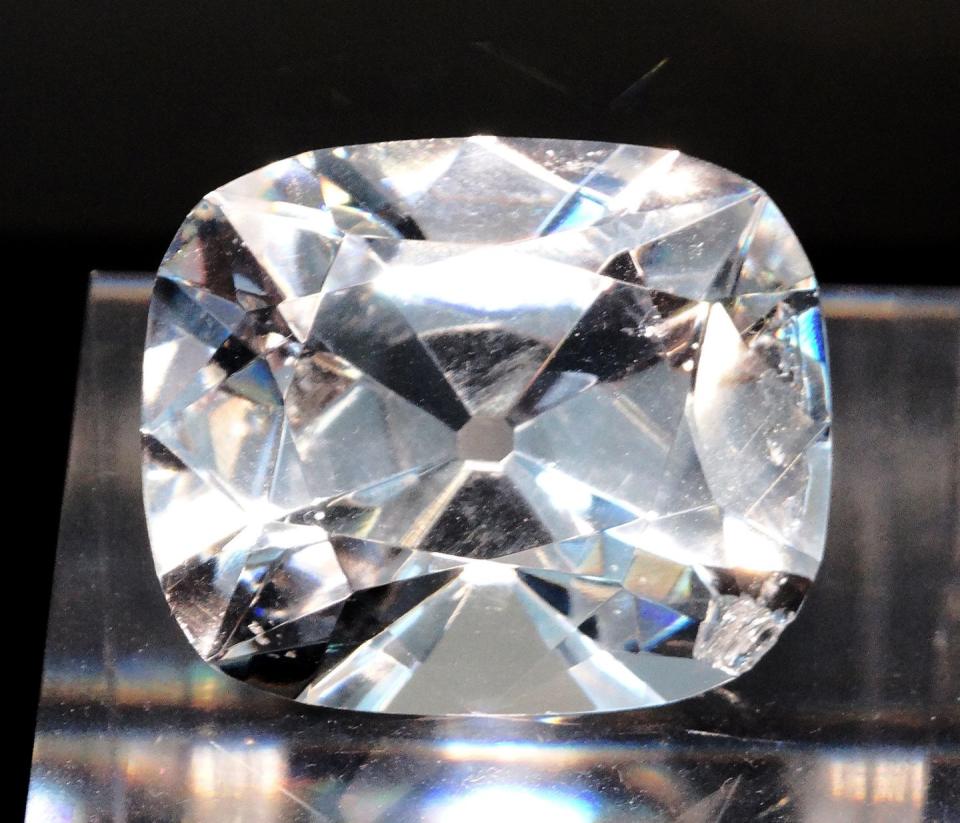
The 140.6-carat Regent Diamond is considered one of the most beautiful and pure stones of its size. But it had an ominous start: it was discovered in India by a slave during the early 18th century, who concealed it in a self-inflicted wound in his leg. In a gruesome twist, the English sea captain who promised to help the slave smuggle the gem out of the country ended up killing him and kept the whitish-pale blue diamond for himself. That was only the start of the curse. It later was owned by an English governor in Madras, who sold it to the French Regent Philippe II of Orleans, for whom it was named. Like many gems, it disappeared during the French Revolution, and reappeared in the sword of Napoleon I, and his story didn’t end well. After his defeat in the Battle of Waterloo, the British exiled the emperor to a remote island in the South Atlantic where he died at age 51.
You Might Also Like


